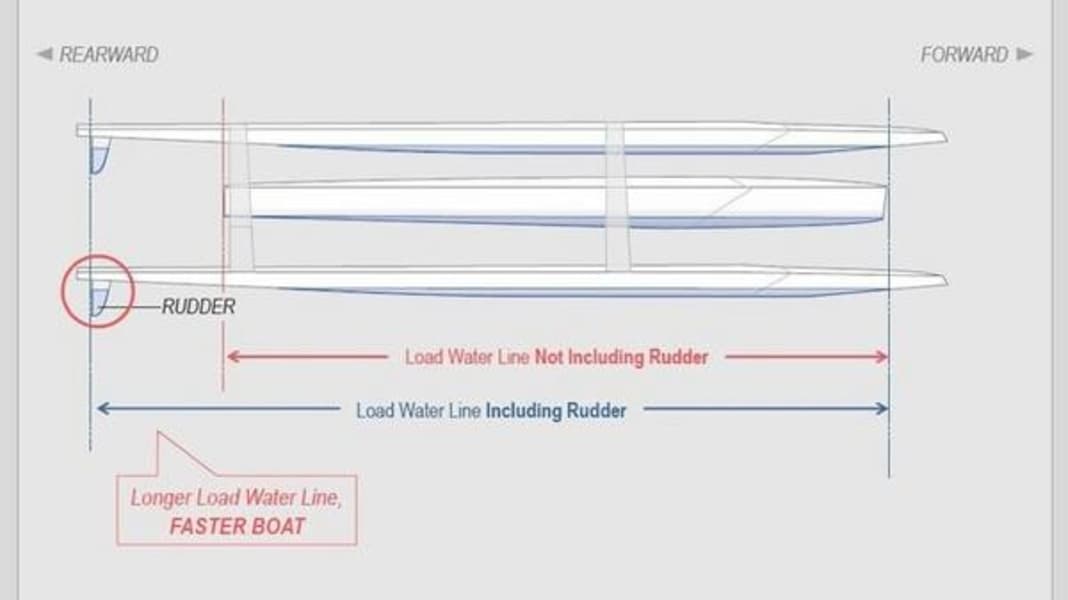
It's the crucial question at the Cup. The Swiss say the oars count, the Americans say "no way". It's all about metres and millions. The rowing puzzle explained in a nutshell.
When measuring the waterline, the Swiss Cup defenders have stipulated in the rules that the distance from the foremost point of the boat that intersects the surface of the water to the rearmost point, including the rudder, applies. According to the foundation charter, this measurement must not exceed 90 feet (approx. 27 metres).
The BMW Oracle trimaran interprets this rule in an extreme way, because only the waterline of the centre hull is completely in the water when measuring. And that is a maximum of 90 feet long. So far, so good.
However, the outer floats (Amas) are significantly longer, but their waterline only touches the water at the front when measuring. If you measure the rudder bladesnot which protrude far aft into the water, the waterline of the Amas fits into the measurement.
However, if the rudders are included, as required by the Swiss, the maximum waterline of the boat is significantly longer than the permitted 90 feet. This would mean that BMW Oracle would have to be disqualified during the measurement, meaning that Alinghi would retain the Cup without a fight.
It was a case for the New York court, which subsequently ruled in favour of BMW Oracle, i.e. for a measurement without a rudder. And Alinghi's appeal, which will be decided soon, is directed against this.
In the Americas Cup, where victory, prestige and a lot of money are at stake, such subtleties are important because every material and measurement advantage wants to be utilised. Unlike with class boats (such as the 12s or the International America's Cup Class), the rules in a so-called deed-of-gift match with unequal boats are often subject to interpretation. And the services of lawyers and judges are currently very often called upon to interpret these rules.
